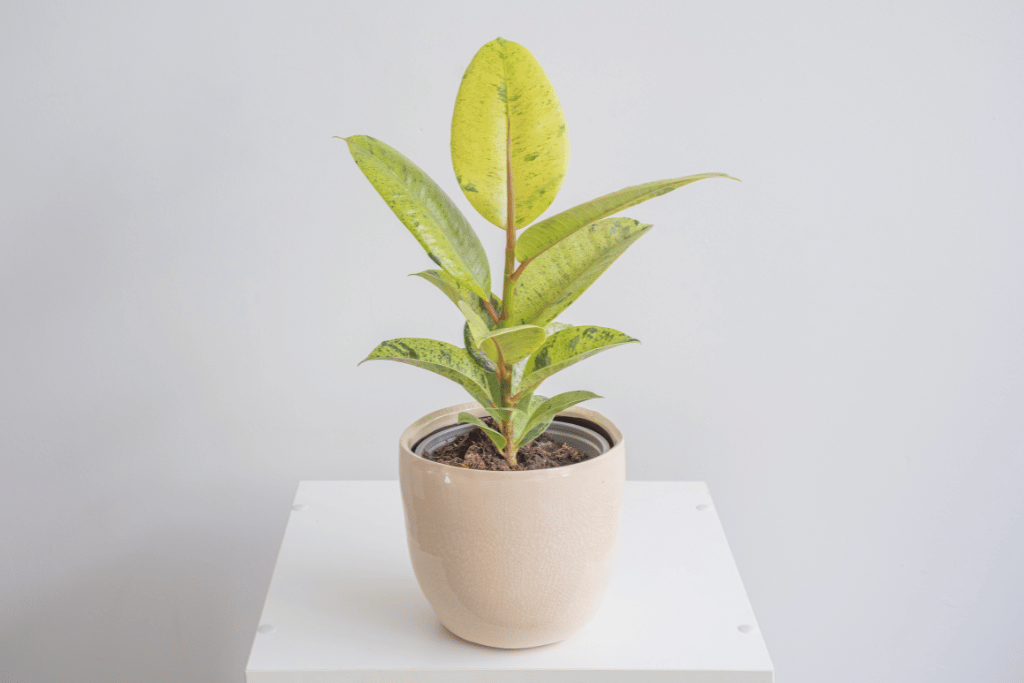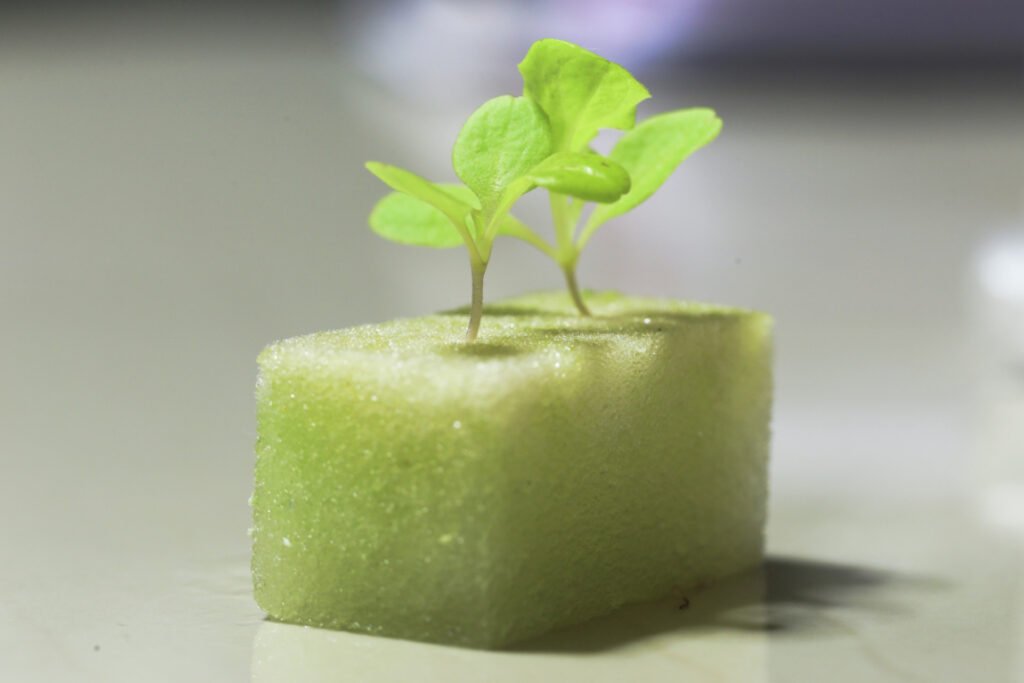
Hydroponic growing is a foreign world to most traditional gardeners and farmers, myself included.
It’s such a strange concept to me, how can plants sprout, grow and thrive in just water?
What about healthy soil, with all of its substance, organic matter, minerals and microbes?
Don’t roots need to be submerged in the earth?
On a recent trip to Florida, my friend and I visited a local farm in his area. They had fields of various crops planted and massive greenhouses. It was a sight to behold.
But there was something else that caught my eye, these long trench-like tubs and tall skinny towers with multiple pockets, bursting with vibrant greens and radiant strawberries.
These simple hydroponic systems were producing untold amounts of delicious, nutritious fruits and veggies without the need for soil!
I was fascinated, intrigued and determined to learn more about the practice of growing hydroponically.
And what better place to begin than starting seeds?
Join me for a quick rundown of what I learned while studying the best hydroponic seed-starting methods.
Why Start Seeds in a Hydroponic System?
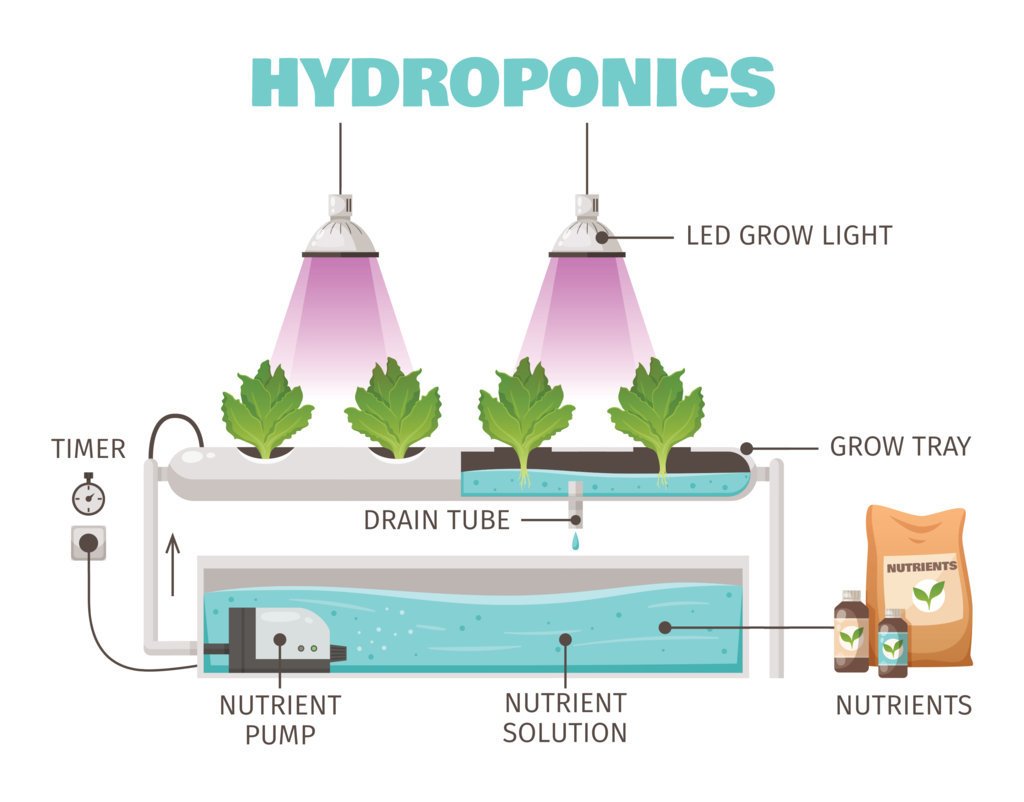
There are a few main reasons to start your seeds in a hydroponic system.
- Seedlings grow more quickly after sprouting.
- It’s easier to transplant seedlings into a bigger hydroponic system.
- The process is cleaner than handling soil.
In order to start your seeds directly in your system, you will first have to set one up!
Here is a complete list of materials required to establish a basic hydroponic system:
- Seeds
- Hydroponic cloner
- Net Pots
- Peat Starter Plugs
- Air Pump
- Air Stone
- Tubing
And a few quick steps to get your setup rocking and rolling with sprouted seeds:
- Fill up the cloner with any kind of water just below where the net pots fall.
- Get the air pump set up. Connect the tubing to the air pump and the other end to the air stone and place it in the reservoir. After plugging in the air pump the air stone should start bubbling.
- Soak the starter plugs in water and then put them into the net pots.
- Place a few seeds in the starter plugs to ensure each one will sprout at least one seedling.
- Keep the starter plugs and seeds moist by misting them every day.
- After the seeds sprout, identify the strongest candidate in each starter pot and clip out the rest so only one remains per pot.
- Seeds should germinate in under a week, then the fun begins!
Now we’ll explore a few different hydroponic mediums that can be used to start seeds.
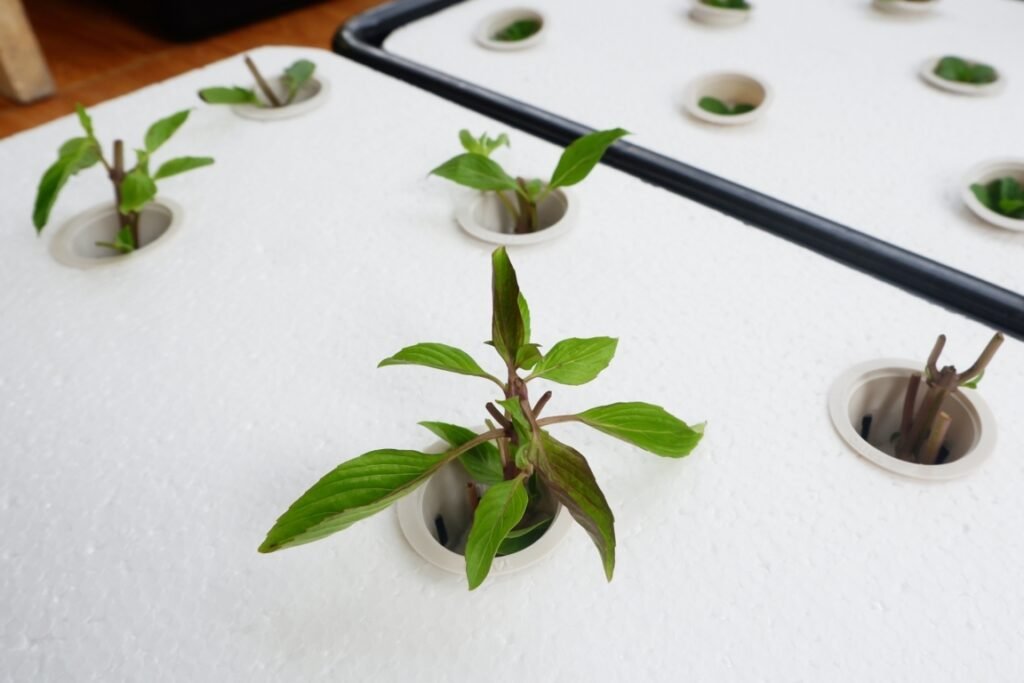
Start Seeds Hydroponically in Rock Wool
Rock wool is a substance that’s used as insulation in construction and as a medium for seed starting in hydroponics and vegetative propagation.
Arguments have been made against its sustainability. The substance is created by heating chalk and rock to excessive temperatures, which then fuse together. Once in this form, the material does not decompose.
That said, it’s incredibly useful in hydroponic gardening. We’ll also discuss other more sustainable media in case you’d prefer to be as green as possible.
Follow these simple steps to get your seeds started in rockwool cubes:
- Break off however many pieces you’re going to need. Run water over them, soaking the tops, and then let them sit in the water for another 10 minutes.
- Plant your seeds into the tiny holes of the rockwool. Use a tip of a pencil or small pair of scissors to widen the hole if needed and help guide the seed in. Tear off a tiny piece of rockwool and cover the hole to block out light.
- Put the rockwool cubes into a seed tray and set them under lights.
- Add water directly to the seed tray to keep the rockwool moist. The cubes will gradually absorb the water, bringing it up to the seed.
- Cover the tray with a humidity dome or plastic wrap to retain warmth and humidity. Remove it once the seeds have germinated.
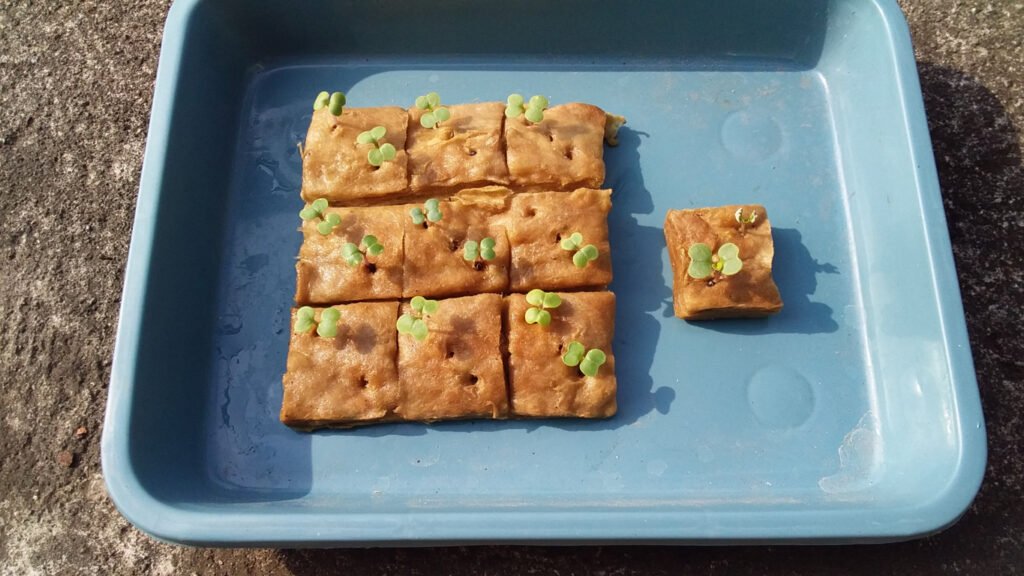
Start Seeds Hydroponically in Peat and Perlite
A mixture of peat moss and perlite may be the perfect combination for starting seeds hydroponically.
The peat will retain moisture without getting soggy or compacted. Mixing in perlite will increase drainage capacity and supply excellent aeration to the medium.
These steps will help you start your seeds successfully in a peat and perlite mix:
- Combine two parts peat with one part perlite. A fine-grain peat will work the best for helping new roots grow and expand.
- Use a basic seed starting tray or one with individual plug cells. Add the mix until the containers are ¾ full.
- Water the trays well until water drains out from the bottom. Dump out the excess water and allow the containers to rest for about an hour while the water disperses evenly throughout the planting medium.
- Sow the seeds on the surface of the medium, spacing them accordingly, or put two in each plug cell.
- Cover the seeds with the moist peat mixture to the appropriate depth.
- Cover the seed trays with a humidity dome or plastic wrap to trap moisture and heat. Make sure the medium stays moist throughout the germination process. The surface can be misted regularly.
- When seeds sprout, remove the covering and set them under bright light.
Start Seeds Hydroponically in Coconut Coir
Coconut coir is a ground fiber made from coconut husks. The organic fiber is gaining popularity in the gardening world, especially with hydroponic growers.
Coconut coir holds moisture, breathes well and has antifungal properties. That’s a winning combo when it comes to seed starting. Coir is sterile and has a neutral pH, which will also help seeds get off to a good start.
Pellets and discs of coconut fiber are produced specifically for seed starting. Using these can make the process a breeze.
To try your hand at starting seeds in coconut coir, follow these simple steps:
- Using a seed tray that is about 2 inches deep, drop the coir pellets in and fill it with warm water. There should be a hole in the coco pellet, make sure it’s facing up. The pellets will begin to absorb the water and swell up.
- Give the pellets about an hour to become fully saturated. Then they’ll be ready for planting.
- Plant a couple of seeds per pellet. If the seeds are large, one will be fine. Pinch the hole closed to cover the seeds and block out the light.
- Cover the seed trays with a humidity dome or plastic wrap and mist the pellets or add a little bit of water directly into the bottom of the tray every day.
- When the seeds sprout, remove the covering and set them under bright light.
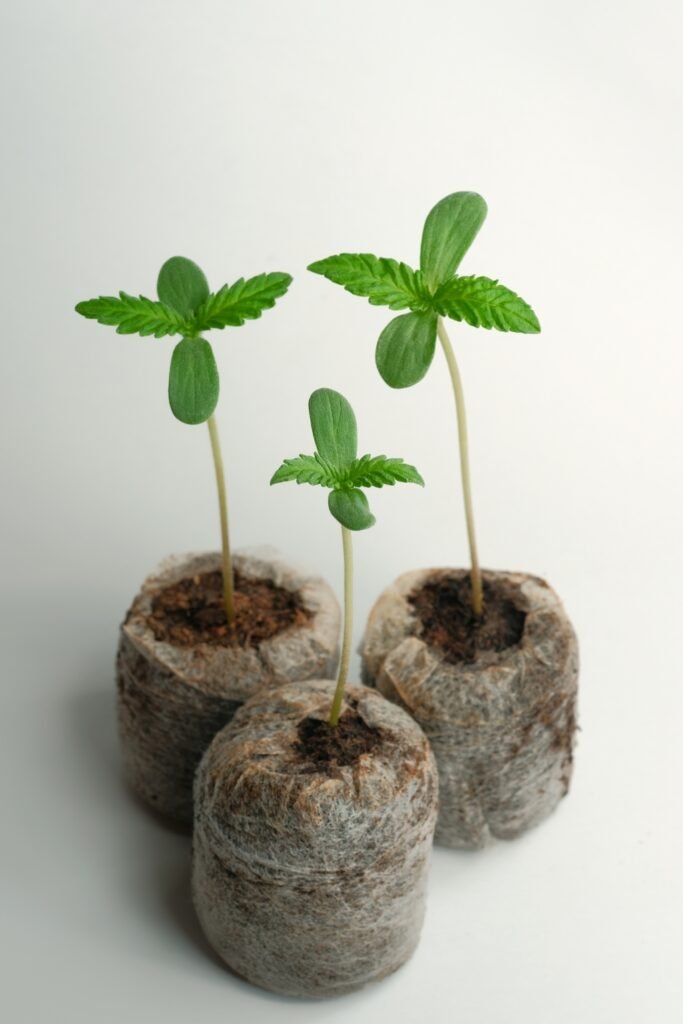
Coconut coir is typically a bit more expensive than peat but is completely sustainable. As a byproduct of the coconut industry, it’s the perfect recyclable growing medium or additive to soil mixes.
Read more deepky about When to transplant seedlings hydroponics.
How to Start Lettuce, Tomato and Cannabis Seeds for Hydroponics
Three of the most popular crops to grow hydroponically are lettuce, tomatoes and cannabis.
They are all cash crops that are in high demand. Growing them indoors hydroponically makes production more versatile, helping meet high market demands. Hydroponics technology has advanced rapidly and excellent quality produce can be grown in these systems.
Lettuce
Lettuce seeds are very fine. Handle them carefully and gently, as they are easily overseeded or blown away. When covering lettuce seeds, do so very lightly. The seedlings are tiny and may have difficulty emerging from a damp, dense covering. They also require some light exposure to activate germination.
Lettuce is a cool-weather crop, so temperatures can be kept slightly lower than other warm-weather crops. Try growing butterhead, bibb or loose-leaf lettuce varieties in your hydroponic system for the best results.
Tomatoes
Tomato seeds are a bit bigger than lettuce seeds and can be buried a little deeper. They love warm and humid climates. Use a heat mat to provide bottom warmth while using a cover to trap heat and humidity. Provide seedlings with continued warmth and plenty of light.
Cannabis
Cannabis is a trailblazing plant in the hydroponic arena. Many hydroponics innovations have been made due to the prevalence of indoor cannabis growing.
The seeds are a bit larger than lettuce or tomatoes and have a tough outer coating. For this reason, cannabis seeds can be soaked in water or folded up in between damp paper towels to initiate the germination process before planting.
Lightly rubbing the seeds with a nail file or sandpaper before soaking will help them take up the water more effectively.
They too will appreciate plenty of warmth and humidity while they’re sprouting and developing into vigorous seedlings.
All three of these popular crops will do well planted in starter plugs, rockwool, coconut coir or peat and perlite. Experiment with which hydroponic medium works best for you.

Germinating Hydroponic Seeds Tips
Starting seeds for hydroponic setups is not much different than starting in soil. The requirements remain the same: Moisture and warmth.
A few parting tips to consider as you prepare to start your own seeds hydroponically:
- Soak seeds beforehand to tell which are viable. Seeds ready for planting will sink.
- Choose the medium that will be the easiest for you to maintain, especially as a beginner.
- Always moisten, but don’t soak, the medium beforehand.
- Be sure to periodically remove plastic coverings to let fresh air circulate in.
- Use a heating mat to speed up the germination process.
- Get tiny seedlings under the light as soon as they emerge.
- Don’t fertilize seedlings until they develop their first true set of leaves.
Frequently Asked Questions (FAQ)
Do you need special seeds for hydroponics?
Seeds used in hydroponic systems aren’t any different than regular seeds. However, some types of plants perform better than others when grown hydroponically.
What crops can’t be grown in a hydroponic setup?
Root crops cannot be grown hydroponically. Potatoes, onions, carrots and beets all need loose soil for proper growth. In a hydroponic system, conditions are too wet and confined.
What are some issues to look out for in hydroponic systems?
Mold is a common problem because of the wet conditions and the same goes for root rot. Plant leaf issues and pest problems are likely due to malnourishment.
What is the easiest crop to grow hydroponically?
The easiest and most prolific type of produce to grow in a hydroponic system is leafy greens. Not much fertilizer or other resources are needed to produce lush, green foliage.
What is the best hydroponic setup for beginner growers?
The best hydroponic system for beginners is DWC (Deep Water Culture) It is the most simple to build, maintain and operate in your own home.


